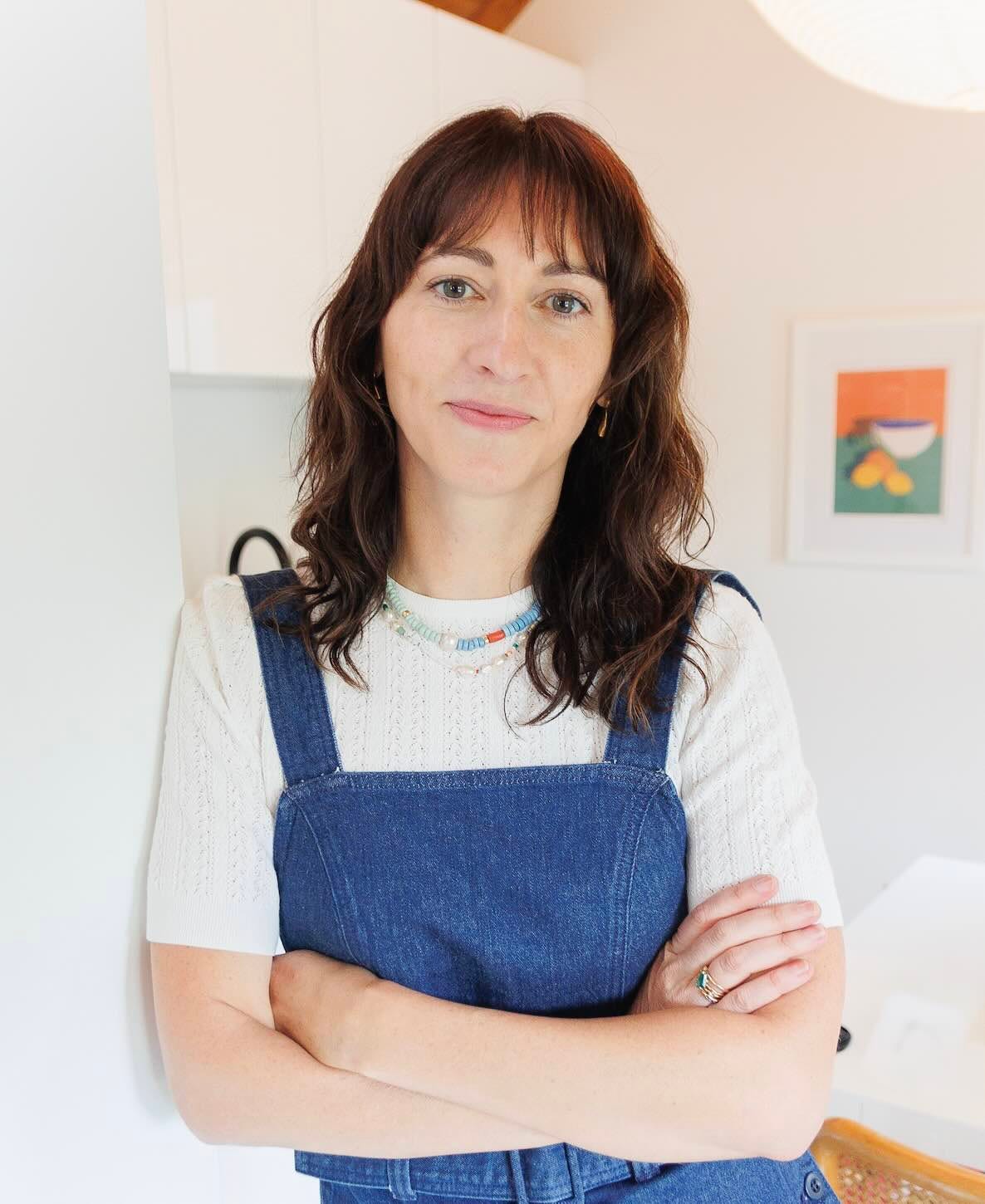“How do you describe a technology that feels very sci-fi but is quite real?”
The TPF Q&A with The Subtext and Nimble’s Carissa Justice.
Carissa Justice wants people to celebrate brand language, not just the cool new logo. She’s the founder of Nimble, a writing and brand studio that does great work for clients like Strava, Figma, and Google X’s new start-up Taara. She also runs
, a publication that covers and highlights excellent brand writing and the people behind it. (She even let one of the Three Point Four Media boys write about our background as reporters.) We called up Carissa to talk about inbound business, self-promotion, and doing instead of thinking.People really like getting a glimpse into a creative’s career path and what their lives look like now.
Why did you start The Subtext? Was it a desire to understand client work and how other people approach it or was it something you thought was missing?
It definitely stemmed out of something I thought was missing. I felt like all the coverage and thoughtful writing was over-indexed on logo design and graphic design. No one seemed to give any reverence to smart strategy work, great copywriting, and holistic brand building. It’s just five paragraphs on type, four paragraphs on the logo, and then maybe three sentences at the end that say, “oh yeah we also did brand strategy and writing for this.”
Why is nobody talking about all this other stuff that goes into branding? The other side was that I wanted to start getting press and submit work beyond just design. And I realized there’s no place for me to even talk about strategy or copywriting.
Ad Week's not going to run a piece of thought leadership on that.
Exactly. And the publications that I really love, like It’s Nice That, Brand New, and Creative Boom don’t really give much airtime to the amazing strategy and writing creatives who are thriving.
What has resonated most with your readers since launch? Have you learned anything about engagement or audience?
I’ve learned a lot. We’ve had to pivot. For example, I originally almost named The Subtext “Verbal Archive.” I wanted to build a library of deep dives into the strategy and writing behind brands. I thought it would be an amazing resource, because there’s so much in-depth coverage on the design side. But I realized quickly that getting people to reveal—or even discuss—strategy would be difficult given the proprietary nature of it. So writing has become the main focus. I also learned readers like to know about the writers and strategists doing the work.
People really like getting a glimpse into a creative’s career path and what their lives look like now. Our new day in the life interview series on Substack has been really popular. People are interested not just in the work and a certain project, but the person behind it.
There’s also something really amazing about the arc of going from full imposter syndrome—I can't believe this client hired me, I have no business being hired by Google X—to articulating this groundbreaking technology and launching it.
Is there a bit of separation of church and state between The Subtext and Nimble, or do you find that they complement each other?
From the very beginning, I've been hell-bent on keeping them very separate. Probably to my detriment. I didn't want people to think I built this thing to be a self-promotion engine for my studio. But in doing that, I took my own perspective out of the equation. I do so much more promotion on The Subtext side. I’m a terrible promoter on the Nimble side of things.
Oh I get it! That’s why we started this Q&A series. We realized we had a little bit of a shoemaker’s son situation: we help our clients with their newsletters, Q&As, and LinkedIn but weren’t doing anything to promote Three Point Four.
I really struggle with promoting the great work we’re doing at my studio, but I love promoting all the amazing work other people are doing. So that’s something I’m actively trying to get better at.
What's something that you guys worked on recently that you want to promote?
[Laughs.] We just finished a project for Taara, which is a new graduate out of the Google X Moonshot shop. It was the perfect project for us, because they ultimately had an articulation challenge, which is the work we do best. How do you describe a technology that feels very sci-fi but is quite real? That's not just a copywriting challenge, but a positioning challenge—how do you build understanding and a POV around light-based internet? That was a really fun one to dig into.
It's not every day that we get a full-scale brand project that really touches every discipline: brand strategy, product positioning, verbal and visual identity, and then building, writing, and designing a website. We're usually at some key points in that trajectory, but I'd say we only have a couple every year where we really touch every piece of that.
It’s rewarding as a small studio to do all of that work and see your process play out. And it’s nice to see the consistency and tone and voice across all of it—instead of being a hired gun to do just visual identity or copy.
Exactly! We’re often a hired gun to do the strategy and verbal phases of bigger corporate rebrands—and we love that. But at the end of the day, you can't be like, “Hey, look at what we did.” It's more, “Hey, we did that part.” So you can only tell a certain part of the story.
There’s also something really amazing about the arc of going from full imposter syndrome—I can't believe this client hired me, I have no business being hired by Google X—to articulating this groundbreaking technology and launching it and realizing, Damn, that looks good. That sounds good. It's actually going gangbusters for their business. That felt quite rare.
Did you get that work through Google or through the people on the Taara team?
It was a referral from a previous client at Google Ventures. Because, again, I'm a terrible self- promoter and I have no sales strategy. Working on that at some point, maybe this summer. [Laughs.] So we were referred to the Google marketing team and then hired by Google X to execute the brand for Taara.
Inbound business is the best. Speaking of inbound vs. outbound: Our accountant always tells us to keep our eyes on the horizon. Even though you’re busy now, you need to have constant conversations about what’s next. How do you balance biz dev with day-to-day client work?
The truthful answer is that this is probably my number one issue in my studio. I think we would have an even more sustainable and successful studio if I could just get it together to be more present on the new business front.
That said, I think what I am good at is developing lasting relationships with clients, and not in the sense where I have a notification that says, “Hey, time to reach out to so-and-so.” My main focus is always doing the best possible work for the project in front of us. I get too entrenched in it, and then lose track of what's coming next. But at least we're delivering a great product or service and then they're willing to go tell other people. So we get less inbound, but we tend to win what we get because it's such a qualified referral and lead.
I want to have a more proactive approach to new business, and I'm starting to think about that now. But up until now, I feel like we have to work with what we get (assuming budget and timing align). I aspire to be pickier, but 2025 has been an economic ride so far.
One last question. I liked the first year lessons piece you published on The Subtext last year. One of your big learnings was “Don’t (over) think, do.” I’ll explain why it resonated with me: I’ve really shifted my approach to client work this way in the last year. Noah shaped my thinking on this when I was waffling on some work for a long-time client and he was like “We don’t need to ask anymore questions. It’s going to be a better use of everyone’s time if we put something good in front of them.” We’ve had a lot of success with this approach. Do you find yourself bringing this “Don’t (over) think, do” approach to client work?
Definitely. I'm down to get into the work and get a first draft out—I just have to feel confident that whatever I put out is great.





